ASUS Booth Tour at CES 2016: 10G Switches, External GPU Dock, USB-C Monitor and more
Ver toda a reportagem:
When ASUS emailed a couple of weeks before CES announcing that they had cancelled their press event for the show, we had a few question marks. Previous shows involve Chairman Jonney Shih’s rapid fire but succinct delivery, announcing up to 10 products in an hour. ASUS’ remit is large, so not having a press event seemed odd. It turns out that for 2016, Computex will be their show, and rather than announce the next level of stuff half-a-year early, CES will be a show for updates to current lines. Or so I was lead to believe – their booth at CES had numerous hidden gems.
Stage 1: Q&A Round Table with ASUS
In December we announced that CES would feature the next episode of the AnandTech Podcast in the form of a round table discussion and Q&A with ASUS’ team. ASUS is celebrating 10 Years of the Republic of Gamers brand in 2016, and we saw an opportunity to rope in two former AnandTech Editors into the mix. You may remember both Gary Key and Rajinder Gill who both held my position, that of Senior Motherboard Editor, and were hired by ASUS on the back of their technical prowess during Athlon X2/Socket 775 to X58 coverage as well as deep DRAM dives. We were joined by Vivian Lien, Chief Marketing Officer of ASUS USA, who was Gary’s contact when we started receiving Republic of Gamers motherboards for testing.
As part of the round table, we discussed how different the reviewing process was with those early models, as well as competition, community, and technical challenges that lead to some projects never seeing the light of day but can afford experience in future platforms. We also had some Q&A from our readers, asking for ROG smartphones, dual socket motherboards, and approaching the concept of more modularity.
ASUS volunteered their audio visual team to record and edit the event, and I understand that it is currently being worked on, including adjusting for the audio of a train horn going past every twenty minutes. We will post it in a separate piece when we get the video to upload.
Stage 2: The Hidden Gems of 10G
Readers of my twitter feed may have picked up on my interest surrounding 10 gigabit Ethernet for more than just the server room. Businesses with cluster farms often use high speed networking for obvious reasons, or for example Linus Sebastian at LinusMediaGroup has had 10 gigabit Ethernet installed in their offices and computers in order to have high speed access to networked lossless video files for several editors at once. In this environment, high speed networking makes obvious sense, and to go down the RJ-45 route (10GBase-T) can get expensive:
1) $760 for the lowest cost 8-port Netgear XS708-E router (or $1400 for the 12-port XS712E)
2) $350-$500 for an Intel X540-T2 dual-port PCIe x8 card per machine
This comes to $3500+ for an 8-machine layout, or $2150+ for four machines using teaming. Either way, at the lowest cost and buying new, the per-machine cost is north of $400. There are some motherboards that come preinstalled with 10GBase-T networking (we reviewed the ASRock X99-E WS/10G) although these also add expense over motherboards without 10G, but do not sacrifice PCIe slots due to extra PLX switches.
My deal with 10G is perhaps a personal quest. I don’t run a small business, however I have a home with a personal content delivery network (my NAS) and over a dozen machines on the network in both wired and wireless formats. Aside from the family streaming high bit-rate video from the drives, my office has multiple machines that require access to ISOs and software throughout the day as part of their installs and tests. By having a 10G backbone at least, there is less room for delay, and anything we can do to speed up the review testing process like this is usually a good idea, especially if someone else is requiring content and the NAS can handle the bandwidth. It also helps for testing networking, something that has been on the cards for some time.
Buying an individual 10G card is easy. I picked up two X540-T2 based units last year for 500 GBP ($600 pre-tax), but without a route through a switch and access to a DHCP in the mix, it requires constant reconfiguration with each new system, adding testing delays and reducing usability around the home. It means that the switch is a bottleneck, because $760 is a sizable chunk of personal investment to anyone without a money-bin.
ASUS is half-solving this, with their new XG-D2008 and XG-S4016 switches.
The XG-D2008 is designed for an unmanaged home/SOHO environment, and comes with two 10GBase-T ports and eight 1G ports all based on RJ-45. The design is sleek (we were told this is near-final), and the unit is rated at 33W maximum power draw. Having two 10G connections is perhaps not earth shattering, but it allows two points to connect via 10G while also having eight others access to data, or it allows a series of switches to be placed in a 10G ring with 1G end-points on each part.
The price of this, we are told, will be around $300 MSRP. Arguably that’s not bad for a dual 10G + octo-1G set up (I initially saw it and thought it was 10x10G for $300, which blew my top), and could help a number of environments. Moving to 3/4/5 ports is obviously what I am requesting for the future, just to enable one machine per switch in a ring to take advantage of the full 10G when needed. This is ASUS’ first foray into 10G networking, so I’m hoping it continues down that route (and ideally at that price).
The other switch is a managed unit, the XG-S4016, and is more geared to office environments. It still has dual 10GBase-T ports, but also comes with two 10G SFP+ ports and sixteen 1G ports. The aesthetic is definitely different, but we were not told the price of this unit.
The second element to ASUS’ 10G efforts is a PCIe card. We reported on the launch of the Maximus VIII Extreme/Assembly motherboard in November, which came bundled with a single port 10GBase-T card built on an Aquantia/Tahuti Networks MAC/PHY mix derived from one of Tahuti Network’s own designs but with an expanded PCB and ROG branding. The card was present at CES, so we asked about availability and if it was going to be sold as a standalone unit.
I was told that having individual sales of the card was the plan, but whether it would be exactly this card or something in the future was uncertain. While an Aquantia/Tahuti card isn’t the industry standard Intel card (something tells me I need to run some metrics and testing), the fact that it would be out there and marketed to consumers is a plus and might bring others into the arena. Pricing could probably be in that $100-$200 range, depending on how many ASUS things they could make and sell, or how deep the contract and relationship with the IC vendors goes.
I’m always excited to see more 10G hardware entering the ring, especially for prosumer and enthusiast. One could argue that 2.5G and 5G are also around the corner and might see easier adoption depending on hardware, but truthfully both of those are more likely to play in the server space due to their benefits. The average family home does not even need Ethernet and uses Wi-Fi for most things, but you could also argue that the average family doesn’t own an ROG based system either, and that is ultimately where the base of the scope of this lies.
http://www.anandtech.com/show/9963/asus-booth-tour-at-ces-2016-10g-switches-external-gpu-dock-usb-c
Two And A Half Geeks 1/18/16: CES 2016 Wrap-Up, OLED Notebooks, VR, Self-Driving Cars, Killer PCs
Noticia:In this latest episode of HotHardware’s Two And A Half Geeks, Dave, Paul and Marco talk about some of the best technology we saw at CES, including OLED-equipped notebooks from Lenovo, HP, and Alienware, the latest VR experiences, Self-Driving Cars, Killer PCs and more...
Show Notes:
02:35 – VR Experience With NVIDIA and HTC Vive
13:05 – NVIDIA Announced Drive PX 2 Autonomous Driving Computer
16:54 – Intel’s Next-Gen Compute Stick Bulks Up With Core m3 and Core m5 Processors
22:00 – Hands On With Intel’s Skylake Powered NUC Mini-PCs
27:50 – AMD Reveals Upcoming AM4 Socket For Zen And New Wraith Cooler
28:52 – AMD RTG Reveals Next-Gen Polaris GPU Architecture Designed For FinFET
32:41 – Hands On With Lenovo ThinkPad X1 Yoga OLED
47:19 – 13” HP Spectre X360 Gaines OLED Display Option
48:20 – Lenovo Shows Off Sleek Yoga 900S
52:18 – CyberPower Targets Broadcast Gamers With Pro Streamer 2-in-1 PC
56:45 – EVGA Shows Off New Gaming Case, VR Ready GeForce, And Future Audio Products
60:21 – Hands On With Gigabyte Skylake BRIX Mini PCs
63:52 – HotHardware’s 10 Best of CES 2016
64:10 – AMD Powered Star Wars Battlefront Gaming PC Build
64:02 – OCZ RevoDrive R400 SSD Rips Through CES At 2.7GB/s
http://hothardware.com/#5PA6MChDaKHyzgDF.99
User Tag List
 Likes: 0
Likes: 0
Resultados 331 a 341 de 341
Tópico: Ces 2016
-
19-01-16, 16:52 #331Tech Ubër-Dominus


- Registo
- Nov 2013
- Local
- City 17
- Posts
- 30,121
- Likes (Dados)
- 0
- Likes (Recebidos)
- 2
- Avaliação
- 1 (100%)
- Mentioned
- 0 Post(s)
- Tagged
- 0 Thread(s)
Última edição de Jorge-Vieira : 19-01-16 às 16:57
-
20-01-16, 09:17 #332Tech Ubër-Dominus


- Registo
- Nov 2013
- Local
- City 17
- Posts
- 30,121
- Likes (Dados)
- 0
- Likes (Recebidos)
- 2
- Avaliação
- 1 (100%)
- Mentioned
- 0 Post(s)
- Tagged
- 0 Thread(s)
Patriot’s Three Prototype Gaming Mice At CES
Noticia:Patriot is no different than many other tech companies these days in that it’s pushing into gaming peripherals. It currently has three on the market (a keyboard, a mouse and a headset), but at CES we saw three mice the company is working on. All three are prototypes at this point, but they all show some promise and are aimed at different types of users.
The working names for the three mice are the Alpha 1, Alpha 2 and Alpha 3.
Patriot’s Global Director of Engineering, Saeed Arash Far, told us that multiple aspects of these mice are still up in the air. These include the final colors and textures, but from our conversation, we believe that even the number and placement of various buttons could be changed in the final versions. All three will have RGB lighting.
Patriot Memory's Three Prototype Mice At CES 2016Alpha 1
The Alpha 1 has several macro buttons on the left side, and the right side panel pops out to reveal six slots for optional weights. In the video, there are 24 g of weights, but Far said that the final design would probably have up to 30 g total. There are also two DPI buttons on the top of the mouse.
There are multiple lighting zones; you can see that the scroll wheel is lit, as are the Patriot logo on the palm rest and the macro buttons. The left and right sides have a bit of a lip for your thumb and pinkie, respectively.
Acknowledging that everyone is different, I found that I could comfortably and accurately hit the two foremost macro buttons (with the tip of my thumb) and the large one furthest to the rear (with my thumb/palm joint), but I struggled with the third and fourth in the middle. I couldn’t click the third one without accidentally hitting another button, and I could click the fourth button only with the flesh of my thumb between my knuckle and joint, which was awkward.
Alpha 2
If you couldn’t tell by the bank of buttons on the left side of the Alpha 2, it’s designed as an MMO mouse.
There are twelve buttons on the left thumb area alone, in addition to the left and right mouse buttons and scroll wheel. There are also two DPI switchers. You can see that there’s a light on left rear of the Alpha 2 that indicates the stage of the DPI; its usefulness is questionable, though, as the lights will likely be obscured by your hand.
The left side of the mouse has a big lip on which to rest your thumb, and the right side has a downward-angled, contoured design that creates two notches for your fingers. You’ll probably either love or hate the way that feels. (Personally, I liked it, but claw-grippers will likely find it uncomfortable.)
It has similar lighting zones to the Alpha 1, with a lit logo, scroll wheel, DPI indicator and backlit macro buttons.
Alpha 3
The more midrange sibling in the new family is the Alpha 3, but I actually liked the feel of this one the best. There’s a nice concavity on both the left and right sides, and the grooves on top of the left and right buttons gave me a firm, comfortable palm grip. The grooves of the left and right buttons remind me of the Razer Diamondback.
The most obvious part of the design is the lighting. I can tell you that it’s even more striking in person, but as you can see, large, multiple sections of the Alpha 3 are lit by a single color. These translucent areas are plastic and look slightly cheap, but when the lights are on, the effect makes you forget all about that.
On top of the mouse are what look like DPI buttons, but at present, Patriot has these set up to actually switch profiles. This has the net effect of switching DPI, but it mainly makes toggling the lighting easier. (Patriot is still finalizing the guts of the mouse, so the DPI functionality could change.)
Although the colors appear limited (the demo unit had just a few programmed, and we were told that all three mice will have RGB lighting), you can employ various effects such as breathing. You can also turn the lights off entirely with a switch on the bottom of the mouse.
The Alpha 3 has forward and back buttons on the left side, in addition to the left/right mouse buttons, aforementioned profile switchers, and scroll wheel.
Far said that this mouse will likely end up with an Avago 8200 dpi sensor, and we believe that the other two mice will have Avago sensors as well, although the Alpha 1 and Alpha 2 will have 12,000 dpi and 16,000 dpi options, respectively.
There’s no word on when these mice may hit the market, nor how much they might cost, but it’s always interesting to see products like these in development. We’ll look forward to comparing these prototypes to the final shipping versions, whenever they become available.
http://www.tomshardware.com/news/pat...ces,31026.html
-
20-01-16, 17:26 #333Tech Ubër-Dominus


- Registo
- Nov 2013
- Local
- City 17
- Posts
- 30,121
- Likes (Dados)
- 0
- Likes (Recebidos)
- 2
- Avaliação
- 1 (100%)
- Mentioned
- 0 Post(s)
- Tagged
- 0 Thread(s)
An Unexpected CES Trend: Modularity
Noticia:Every year at CES (and other large tradeshows such as Mobile World Congress and Computex), certain trends emerge. Increasingly at CES, those trends include throngs of quirky or gadgety tech such as smart-everythings (even faucets and beds) or Bluetooth speakers (so, so many Bluetooth speakers), but one that stuck out me this year was modularity.
Computing, In Pieces
The most obvious modular trend is coming in the form of external GPU docks. MSI and Alienware had external GPU docks last year, but the idea is catching on. Asus has one now, and so does Razer, and actually, MSI kind of has another one. We’re eager to test these out for ourselves in a comprehensive way, both practically (day-to-day) and with benchmarks, but the concept is attractive: You can have a svelte and light but powerful laptop to carry around for work or play, but when you need extra graphical horsepower, you can sit down at your desk and connect to a beefy GPU. As a side benefit, you can plug in all your desktop peripherals (including extra storage) to the GPU dock, which makes for a nice and tidy desktop setup.
 Asus GPU dock
Asus GPU dock
Lenovo is taking a similar approach with its ThinkPad X1 Tablet. It’s a 2-in-1, which is a type of PC that is inherently modular because the keyboard can be detached, but Lenovo took that concept a leap further. In addition to an optional stylus, the company developed three modules that bring specific extra capabilities such as a projector or an Intel RealSense camera. Lenovo didn’t say that it was making more modules, but we imagine that it will, as requests from its customers start rolling in.
 Lenovo ThinkPad X1 Tablet with modules and accessoriesBoth Asus and Gigabyte showed off gaming keyboards that have removable numpad/macro key pads that you can place on the left of the main keyboard for an extra bank of macro keys (or on the right for, uhh, accounting?).
Lenovo ThinkPad X1 Tablet with modules and accessoriesBoth Asus and Gigabyte showed off gaming keyboards that have removable numpad/macro key pads that you can place on the left of the main keyboard for an extra bank of macro keys (or on the right for, uhh, accounting?).
Thought of a certain way, smartphone docks like the still-in-development model for the Acer Liquid Jade Primo and the Microsoft Display Dock for the new flagship Lumia phones are modular. The docks give you flexibility and also create more value and use cases for smartphones. You don’t need the docks, but they’re available if you want them.
 Acer smartphone dockYou could even think of the burgeoning VR market as an inherently modular one. Even if you buy one of the marquee HMDs like the Oculus Rift or the HTC Vive Pre, those devices are technically peripherals. You still need a PC and hand controllers (although those should be included with the HMDs when they come to market), and there are more and more exciting add-ons coming, such as the 3DRudder and the Virtuix Omni treadmill. (In the case of the latter, you still need another controller like the rifle we used in our demo, to get the full effect).
Acer smartphone dockYou could even think of the burgeoning VR market as an inherently modular one. Even if you buy one of the marquee HMDs like the Oculus Rift or the HTC Vive Pre, those devices are technically peripherals. You still need a PC and hand controllers (although those should be included with the HMDs when they come to market), and there are more and more exciting add-ons coming, such as the 3DRudder and the Virtuix Omni treadmill. (In the case of the latter, you still need another controller like the rifle we used in our demo, to get the full effect).
You don’t need a VR treadmill or a foot controller or a rifle controller to get the full effect of VR -- necessarily -- but some people will want those things for some of their VR experiences. Peripherals for your peripherals.
An Era Of Shifting Needs
Where is this modularity trend coming from? I believe that partly, we’re seeing some of this as a way for companies to overcome the commoditization of too many products, but also, as we’ve seen from the shifting form factor trend, people’s computing needs are becoming more specific.
There’s a burdensome weight to the increasing sea of sameness. We see this in smartphones, gaming laptops, peripherals (increasingly), motherboards and even many lower-end VR HMDs -- these “Google Cardboard plus” devices that are proliferating.
We need fresh ideas. Look no further than the RGB trend. Sure, fancy lighting is cool (really cool), but we’ve seen things come to market that turn out to be a previously-existing product, but with lights. Meh.
Really, the market increasingly demands the flexibility that modularity provides. Someone that wants to game at the highest settings in 4K does not necessarily need the same PC as the guy who wants a killer rig for recording music and running complex audio software in real time. The daily game streamer needs something different than the video producer. And so on, and so on.
CyberpowerPC is taking a whack at the issue with its ProStreamer line, which is essentially two PCs with different dedicated purposes crammed into one chassis.
 CyberpowerPC ProStreamerThinking of mobile computing, one of the executives at Purch Media (Tom’s Hardware’s parent company) that we saw at CES noted that with a dock and a phone like Acer’s Liquid Jade Primo setup, he wouldn’t have needed to bring his laptop to Las Vegas at all. Contrast that with what I (and many other journalists covering these tradeshows) need: I could really use a secondary display for my laptop as I write, fact check, and edit photos and video. Asus showed us a portable display (basically a USB Type-C version of this) that would be an ideal add-on for my hotel room productivity setup.
CyberpowerPC ProStreamerThinking of mobile computing, one of the executives at Purch Media (Tom’s Hardware’s parent company) that we saw at CES noted that with a dock and a phone like Acer’s Liquid Jade Primo setup, he wouldn’t have needed to bring his laptop to Las Vegas at all. Contrast that with what I (and many other journalists covering these tradeshows) need: I could really use a secondary display for my laptop as I write, fact check, and edit photos and video. Asus showed us a portable display (basically a USB Type-C version of this) that would be an ideal add-on for my hotel room productivity setup.
Again, that’s modularity at its finest. I’d have a laptop, a second display, massive external storage for scratch disks, mouse, and so on. That exec, using a smartphone/dock, a wireless keyboard/touchpad and any TV or monitor, would have an eminently portable, lightweight productivity solution. Different needs, different solutions.
How far might this go? Perhaps we could see something happen in the motherboard market, which is an area in which companies are struggling to differentiate themselves. What if you could select not just your motherboard, but the components present on the motherboard? You could choose how many and what type of PCIe slots or storage connections, for example, or swap out standard heatsinks for slick aftermarket solutions. A motherboard maker could start with a standard board design and let users configure them extensively. (Just a thought, motherboard makers.)
20/20
In hindsight, I realize that this has been coming for a while. Project Ara and Puzzlephone have been harbingers of a modular smartphone for some time, and of course there are the aforementioned GPU docks from a year ago. The 2-in-1 trend was a big marker, too, and new markets like VR/AR are introducing new problems that multiple products are solving in multiple ways.
Keep an eye out in the coming months and years for further innovations in the way of modularity.
http://www.tomshardware.com/news/ces...ity,31034.html
-
21-01-16, 09:03 #334Tech Ubër-Dominus


- Registo
- Nov 2013
- Local
- City 17
- Posts
- 30,121
- Likes (Dados)
- 0
- Likes (Recebidos)
- 2
- Avaliação
- 1 (100%)
- Mentioned
- 0 Post(s)
- Tagged
- 0 Thread(s)
Intel pushing Real Sense out to gamers and other applications
Noticia:Intel had a massive area in the main hall of the Las Vegas Convention Center at CES this year. And they had a tremendous amount of technology to show off as well. One of the big things for Intel this year, is that of their Real Sense technology. They're very excited about it and have plenty of design wins to bring it to the masses.
They showed off Razer's new Stargazer camera, having a popular streamer sitting there actually playing live against three others. They showed how the dynamic background removal worked, and we were pleasantly surprised with it's effectiveness.
But there were other uses for Real Sense as well, such as with a gigantic interactive all where you could coax a school of fish into moving by simply using your hands. It was all quite impressive, though perhaps in the way that tech demos sometimes are. I can see the validity of the technology and where it can be useful for interacting with, well, anything. But hopefully companies, museums and even aquariums adopt Real Sense, because it could be another type of revolution that we never knew we needed. Razer is helping to show us that there are uses for the technology aside from 3D modeling your face.
In the end, though, it was fascinating at its core but perhaps a bit underwhelming. It's a burgeoning technology that can be useful, if it finds an appropriate niche. Intel is pushing hard, however.
http://www.tweaktown.com/news/49810/...ons/index.html
-
21-01-16, 09:51 #335Tech Ubër-Dominus


- Registo
- Nov 2013
- Local
- City 17
- Posts
- 30,121
- Likes (Dados)
- 0
- Likes (Recebidos)
- 2
- Avaliação
- 1 (100%)
- Mentioned
- 0 Post(s)
- Tagged
- 0 Thread(s)
FINsix Dart The World’s Smallest Laptop Charger At CES 2016
Noticia:FINsix Dart The World’s Smallest Laptop Charger
Throughout CES, we are seeing chargers that can charge laptops and USB devices at the same time, however they are generally rather large. A few years ago, FINsix was a small startup, now they are preparing to ship their first ultra small universal laptop charger, the Dart.
The Dart measures 2.5 cubic inches, and weighs about 60 grams, making it the smallest and lightest laptop charger I have seen. It will charge laptops up to 65W, plus a single USB device with 2.1A at the same time. With the Dart you will get nine tips to connect to your laptop. While FINsix is working on providing tips for all the major manufacturers, sometimes the tips are incompatible; FINsix is trying to make sure that doesn’t happen, and will provide the new tips as necessary.
image: http://www.legitreviews.com/wp-conte...rt-645x362.jpg

While the FINsix Dart is only available for pre-order right now, they plan to start shipping within the 1st quarter of 2016! You can put in your pre-order for $89.99 and pick from the available colors, Blue, Magenta, Silver, Orange and Gunmetal.
image: http://www.legitreviews.com/wp-conte...rs-645x362.jpg

Lenovo is one manufacturer that is working directly with FINsix on developing the Dart charger for it’s products and has recently announced that their ThinkPad 65W Micro Adapter charger is based on FINsix’s high-frequency power design. The ThinkPad Micro-Adapter will be made available for the latest ThinkPad X1 Carbon, and X1 Yoga.
http://www.legitreviews.com/finsix-d...6KOgHuo3acE.99
Tough Tested Premieres USB Cable with Circuit Breaker at CES 2016
Noticia:Tough Tested has a wide range of products geared for outdoor usage. Their rugged line includes various cables, portable battery chargers, earbuds, and speakers. Tough Tested builds their products with durable materials, designed to be chemical resistant, and withstand extreme temperatures. Tough Tested’s products are backed with a 5 year warranty, which goes to show they are confident in their products.
image: http://www.legitreviews.com/wp-conte...le-645x484.jpg
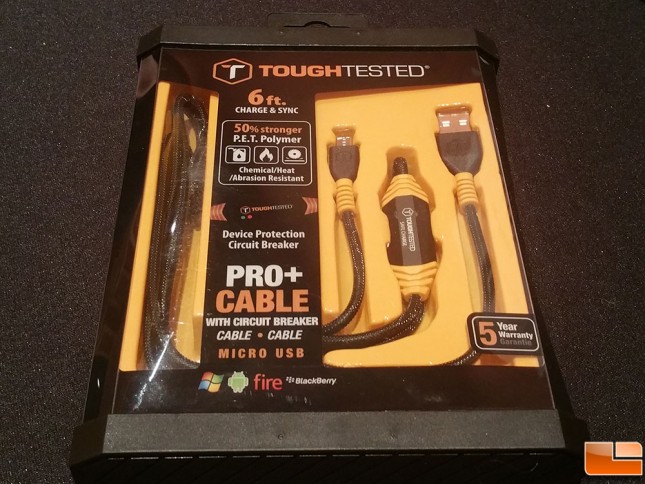
Cell phones are becoming a critical device for many people. We protect the phones from physical damage with cases, and expect each generation of cell phone to be stronger and more damage resistant than the last. However, one aspect that many of us don’t pay attention to is the quality of power that we are using to charge our devices. Tough Tested has taken this into consideration with their new line of charging cables, the Pro+. A small circuit breaker is built into the cable, making sure your device is not hit with any type of power surge. While you might be asking yourself what’s the big deal, think about how many people jump into their vehicle and plug in their phone, THEN start the vehicle. That can cause a power surge and damage the battery or worse. It can be even more severe in extreme weather when the vehicle is cold.
image: http://www.legitreviews.com/wp-conte...le-645x310.jpg

While the Pro+ cable is not available for purchase yet, it should be on shelves sometime in 1st quarter 2016 with a MSRP of $19.99 for the Micro USB version, and $29.99 for the Lightning version. If you work outside in a harsh environment, Tough Tested’s products should be at the top of your list to take a look at.
http://www.legitreviews.com/tough-te...Zm5v87EE3cF.99
-
22-01-16, 15:08 #336Tech Ubër-Dominus


- Registo
- Nov 2013
- Local
- City 17
- Posts
- 30,121
- Likes (Dados)
- 0
- Likes (Recebidos)
- 2
- Avaliação
- 1 (100%)
- Mentioned
- 0 Post(s)
- Tagged
- 0 Thread(s)
Intel Going Deeper With Two New RealSense Depth Cameras
Noticia:A couple of years ago, Intel brought us the RealSense Camera F200, its first short-range depth-sensing camera. Since then, RealSense has come a long way; the F200 found its way into a handful of notebooks and all-in-ones. Depth and motion detection lead to many useful applications, such as creating virtual green screens and replacing passwords with facial recognition.
 Intel's RealSense R200 Depth-Perceiving Camera In A 2-In-1 SystemThe F200 is just a short range camera, however, and its limited range has caveats. Intel’s response to this is the new RealSense Camera R200, a long range depth-sensing camera. The new R200 contains dual-infrared cameras for depth sensing a high-resolution camera capable of capturing in 1080p. The R200 has an operating range of up to 3.5 meters. With this much operating room, the R200 can recognize more levels of depth, which is a huge step forward from the F200's maximum range of 1.2 meters.
Intel's RealSense R200 Depth-Perceiving Camera In A 2-In-1 SystemThe F200 is just a short range camera, however, and its limited range has caveats. Intel’s response to this is the new RealSense Camera R200, a long range depth-sensing camera. The new R200 contains dual-infrared cameras for depth sensing a high-resolution camera capable of capturing in 1080p. The R200 has an operating range of up to 3.5 meters. With this much operating room, the R200 can recognize more levels of depth, which is a huge step forward from the F200's maximum range of 1.2 meters.
The increased range that the R200 provides brings several new possibilities to the table. Intel suggested that the R200 be used to provide a more robust online shopping experience; to that end, Intel partnered with Zappos during CES to illustrate such functionality. Other examples that come to mind are 3D scanning or enhanced photography with depth-based special effects. Personally, I can imagine RealSense’s depth-perceiving technology would be useful in a pair of augmented reality lenses.
Also revealed was Intel’s RealSense Camera ZR300, which was announced along with the RealSense Smartphone Developer Kit. The DK will feature an Intel Atom x7-Z8700 SoC and will soon be available to Android developers. The ZR300 will also support Google’s Project Tango Product Development Kit. The entire ZR300 package consists of six sensors, including the RealSense Camera R200 accelerometer/gyroscope combo, an 8MP rear-facing RGB camera, and a 2MP front-facing camera. With mobile applications like Instagram and Snapchat becoming ubiquitous with the smartphone experience, a depth-perception couldn’t have come at a better time.
http://www.tomshardware.com/news/int...nes,31053.html
-
25-01-16, 18:31 #337Tech Ubër-Dominus


- Registo
- Nov 2013
- Local
- City 17
- Posts
- 30,121
- Likes (Dados)
- 0
- Likes (Recebidos)
- 2
- Avaliação
- 1 (100%)
- Mentioned
- 0 Post(s)
- Tagged
- 0 Thread(s)
Best of CES 2016 – Thermaltake ToughPower DPS G 1250W PSU
Noticia:
CES 2016: This year’s show was packed full of great new products, but few brands brought as many new toys to the show as Thermaltake. Even with so much to show off this year, there was one product in particular that really stood out for us in the Thermaltake suite, the Thermaltake ToughPower DPS G RGB 1250W Power Supply.
While it may not have the easiest to remember product name, it does pack a lot of features that are simply the best you could ask for from a PSU today. Equipped with 80 Plus Titanium efficiency, the highest quality components and capacitors, fully braided and flat cables for excellent routing and management, an RGB fan and smart connect features, the DPS G certainly has what it takes to compete with any of the other big names in the PSU market.
What’s really important, however, is that it is SPM Supported and that you can monitor and control the unit from the web, desktop or mobile apps. Check your efficiency, load, fan speeds, temperatures and more, tweak the performance as needed, or just log in to change the colour of the pre-installed RGB Thermaltake Riing fan, the choice is yours.
Thermaltake are so confident in this unit that they’re blessing it with a 10-year warranty, and if that doesn’t give you piece of mind over the build quality and performance of this unit, nothing will.
 Thermaltake ToughPower DPS G 1250W PSU
Thermaltake ToughPower DPS G 1250W PSU
Check out our full CES 2016 coverage of the DPS G here or check out more great Thermaltake products from CES 2016 here.
http://www.eteknix.com/best-of-ces-2...s-g-1250w-psu/
Best of CES 2016 – QNAP M.2 SSD NASBookNoticia:
We saw a lot of great products at this year’s show, but the latest storage device from QNAP really stood out from the crowd. While deploying huge NAS systems is no bad thing, they offer lots of potential for storing huge amounts of data at a competitive price, the new M.2 SSD NASBook could be the future of NAS systems.
Offering up a super compact form factor, this little box runs quiet, hold up to four M.2 drives and offers up blisteringly fast performance. When it comes to building a connected home multimedia setup, or managing all of your personal data, this could be the perfect NAS for the job.

Equipped with 4 x m.2 SSD bays, support for 2280/2260/2242 SATA 6Gb/s SSDs, 2 RAM slots for up to 8GB of DDR3L RAM, a powerful Intel Celeron N3150 quad-core Braswell processor with built-in Intel HD Graphics, the NASBook can transcode 4K video in real-time! I know I would love one of these as part of my own home setup, it’s small enough and stylish enough to place under your TV, in your office, or anywhere for that matter. With the added bonus of great connectivity and a built in gigabit switch to make it a true hub for your home/office.
 QNAP M.2 SSD NASBook
QNAP M.2 SSD NASBook
Check out our full CES coverage of the QNAP M.2 SSD NASBook here or check out our latest QNAP storage, news, reviews and competitions here!
http://www.eteknix.com/best-of-ces-2...2-ssd-nasbook/
-
26-01-16, 17:05 #338Tech Ubër-Dominus


- Registo
- Nov 2013
- Local
- City 17
- Posts
- 30,121
- Likes (Dados)
- 0
- Likes (Recebidos)
- 2
- Avaliação
- 1 (100%)
- Mentioned
- 0 Post(s)
- Tagged
- 0 Thread(s)
CES 2016 Roundup: Total Editor Recall
Noticia:
Another year, another Consumer Electronics Show - actually, it seems that it's official name is now just CES. Nonetheless, it ends up being one of the biggest shows of the year for technology, if not the biggest. Covering PC to smartphone to TV to IoT to the home and the car, CES promises to have it all. It's just a shame that the week involves so many press events and 7am-midnight meeting schedules it can be difficult to take it all in, especially with 170,000 people attending. With the best of interests, we did take some information away and we asked each editor to describe the most memorable bits of their show.
Senior PC Editor, Ian Cutress
CES is a slightly different show for me compared to the other editors - apart from flying in from Europe which makes the event a couple of days longer, it actually isn't my priority show, and that honor goes to Computex in June. Despite this, and despite companies like ASUS cancelling their press events because everything they would have announced would come after Computex anyway, CES this year felt like my busiest event ever. Overriding announcements like AMD's Polaris is a great way to get the adrenaline going, but a couple of other announcements were super exciting too.
First up I want to loop back to ASUS. Despite the lack of a press event, their PR mail shot just before the event mentioned a 10G Ethernet switch being launched. At the time I mistook the announcement for a 10 port switch, when the device is actually a 2x10G + 8x1G, but even in that configuration the price of $300 is hard to ignore. Moving a workspace to 10G, especially 10GBase-T, means getting a capable switch, which at a minimum costs $800 at the moment for an 8-port number. So bringing that down to something more palatable is a good thing.
Having been to China to visit Huawei at the end of last year and talking about the Kirin 950 meant it was good to see the Mate 8 launched and Andrei's launch day review. ARM's A72 microarchitecture, the thinner, lighter and more powerful upgrade to A57, was in the flesh and on 16nm using TSMCs 16FF+ node. When we spoke with Huawei and HiSilicon before the launch, they were promoting some impressive numbers especially on power efficiency, which Andrei tested and confirmed. Whereas 2015 was a relative dud for mobile on Android, 2016 should breathe a bit of life into an ever expanding market with the introduction of A72 and 16/14nm.
Speaking of things that should come to life in 2016, Virtual Reality should be on the rise and the constant talk about VR was ever present at the show. Not only the kits (I had another go at the HTC Vive with iBuyPower while HTC filmed it) but also the hardware that powers them, with AMD's Raja Koduri stating that true VR requires 16K per eye at 240 Hz. While we're far away from that right now, we saw new hardware gracing the scene such as EVGA's VR Edition that provisioned for all the USB ports needed, or full on systems with MSI's Vortex. The Vortex was interesting by virtue of the fact that it sounds essentially like the Mac Pro with a single CPU and two GPUs in a triangular configuration sharing a single heatsink and a single fan to cool them in nothing bigger than a small wastepaper bin. While the design is purely aimed at the gaming crowd, a professional look paired with a Core i7 and two GTX 980 Ti graphics cards (or any upcoming 14/16nm cards), plus the Thunderbolt 3 ports it has, would make it a mini powerhouse for gaming and VR.
I got super excited for a couple of other things, but perhaps not for normal reasons. Firstly was storage - Mushkin showed us an early PVT board of their new 2TB drive, but said it was a precursor to a 9mm 4TB model coming in at $500. That pushes pricing down to $0.122 per GB, although in that configuration due to some RAID controllers and splitting it takes a hit on IOPS and power consumption, but nonetheless it seemed a good way for cheap SSD style storage. The other part was Cooler Master's new MasterWatt power supply with an integrated ARM controller and Bluetooth. This gave the user, either via internal USB or on the smartphone app, access to the power consumption metrics, rail loading and recording functionality that I've badly wanted in a power supply for a while. With the right command line tools and recording, I ideally want to get several of these to power my next generation of testbeds and get a metric ton more data for our reviews. I've pitched several ideas to CM about how we can use them in the future and they seem very willing to work towards a common goal, so watch this space.
My big show of the year is going to be Computex in early June, when a number of the standard tech companies have already stated they have large plans for releases. Roll on 2016...!
Senior Laptop Editor, Brett Howse
Every year we converge on Las Vegas to see all the new technology announcements from the world. The show is massive, and there always a struggle to see as much as you can in the limited time available. This year I’ve stepped up as the senior laptop editor so there was plenty for me to cover in the couple of days I had boots on the ground, so to speak.
I think for me the most amazing announcement was the incredible number of devices that were available with OLED displays. I’ve long been a fan of the deep black levels OLED can produce and I’ve been wanting to see some on notebooks. We got that and more. There were several notebooks announced with OLED including the Lenovo ThinkPad X1 Yoga, the HP x360, and the Alienware 13, but I think the most impressive was the 30-inch Dell UltraSharp display. The price is very high but new uses of technology always start that way.
OLED is not the holy grail either. It has power draw issues on high APL workflows which is kind of the standard in the PC space. But as a first step into the PC sector, I was very impressed with the displays on all of the devices. It doesn’t even appear that the price premium is going to be that bad on the notebooks so hopefully we will see more innovation with these displays.
Another trend I’ve noticed, and this didn’t start at CES, is just how thin and light powerful notebooks have become. Everyone was keen to show off their latest notebooks based on Skylake, and it’s fairly stunning how much computer you can pack into such a small body. The LG gram is a great example of this. LG decided to use traditional Ultrabook parts in a 15-inch chassis, and when you see a 15-inch notebook under three pounds, it’s almost like it's not there. Very impressive.
Often the trade off of this is battery life though, and with the rare exception many companies have been going the smartphone route where thin and light trumps extra battery life. But even with that said, notebooks like the ThinkPad X1 Carbon got thinner and lighter this year but also increased battery capacity. High density batteries come into play here. I think it’s going to be a trend we continue to see but hopefully device efficiency makes up the difference. Everyone has different needs as far as battery life, and even the worst performers in 2016 last far longer than notebooks only a couple of years old.
The final thing I want to bring up is the decline in the PC market. Depending on what numbers you look at, the PC market dropped 6-10% in 2015 when looking at unit sales. I suppose that’s not a huge surprise considering how we interact with different devices now, and we have not seen an increase in system requirements for Windows since Vista in 2007, so old computers are still getting by. I’m as guilty of this as anyone, since I just upgraded to an i7-6700K system from an i7-860 system I believe I built in 2009. My old system was still good and rarely did I wish for more performance. Tablets have also taken some of our usage share, and with their light weight operating systems people are already finding they have a long lifespan. But despite the bad news about PC sales, it actually has been very good for consumers.
The quality of laptops released at CES were clearly a step ahead of what they have been in the past. In the past quality was secondary to quantity, but with the drop in volume, everyone has had to step up their game. Build quality, display quality, and performance have all taken a big step forward, especially for companies competing in the premium space. Users also want a nice looking laptop, and we saw the Dell XPS 13 come along last year and set the bar pretty high. Dell then took the styling and applied it to the XPS 15 to great effect, as well as their new Latitude 13. No one else is standing idle though, and there have been some excellent designs by other companies as well like the HP x360 and Lenovo 900.
So although the numbers suggest an industry in decline, I saw plenty at CES to make me hopeful for the future that at least the devices are improving for those that want them.
Mobile and Tablet Editor, Brandon Chester
This year’s CES was my second time attending the show. I was quite new to AnandTech during my first CES, and what I can say is that while this year seemed even bigger than last as far as the scale of the show goes, for me personally it felt much less frantic than last year. CES is an interesting event for me because there aren’t always many major announcements made which relate to new mobile products, but because of how prolific the smartphone has become most of the announcements tie in with the mobile world in some fashion.
One of the big pushes this year was VR. This isn’t unexpected, given that there are now many vendors trying to get involved with VR now that it appears that the category will be much bigger than the niche market some may have expected it to be in the early days of the Oculus Rift.
At CES, I was able to try the HTC Vive and the Gear VR. I wasn’t able to try the Oculus Rift, but everything I’ve heard from other people and read online says that the Vive is the best of these three major offerings. I have to admit that I was quite impressed by the demos for the Vive, and you can read a bit more about that here.
One of the barriers to adoption that I can see with the Vive will be the fact that setting up the lighthouse tracking stations requires a substantial amount of space, and I don’t think many users are going to have a room that they can dedicate to using for VR. In most cases, I expect that VR will end up being a way to increase immersion without requiring the user to move about any more than existing games require. Unfortunately, this won’t take full advantage of VR’s potential, but that’s just the truth of how most people want (or are able) to play games if we consider it a mass market venture.
As a mobile editor, the most interesting thing about VR is how much it owes to the advances in the smartphone market. The only reason any of these products exist in their current forms is because of the work to create small displays with higher and higher resolutions, along with the great advancements that have been made in the manufacturing of OLED displays. I don’t think the current VR headsets are where they need to be in this regard, as in my experience you need to move away from PenTile in order to avoid the chromatic aliasing and other artifacting that the current headsets have. The displays will eventually have to enter the realm of 4K and even 8K panels as well in order to have a high enough resolution to mimic how you would actually see the world. However, the fact that there are such high resolution OLED panels available right now is definitely the result of how that technology has advanced in order to be used in smartphones, and the display technology wouldn’t be where it needs to be for these first generation VR headsets if that had never occurred.
On the tablet side of things, I saw two notable tablet launches at the show this year. The first was Huawei’s MediaPad M2 10, which is a mid range Android tablet using the Kirin 930. More interesting was the launch of Samsung’s TabPro S. This announcement was a surprise to me, and even more surprising was the fact that Samsung had decided to go the Windows route with their 2-in-1 instead of using Android. Samsung may have realized that moving to a 2-in-1 can amplify the issues with Android tablets, and using Windows allows you to provide an experience that leans more toward a laptop, which is what I feel many 2-in-1 buyers are really looking for anyway.
Something absent from this year’s show were smartwatches. Part of this certainly has to do with how much of the market Apple has grabbed, coupled with the fact that they don’t attend the show. Even so, I was surprised to see very little promotion from other vendors and nothing in the way of new announcements. We did see new finishes for the Huawei Watch and Samsung Gear S2, but no completely new hardware. We might see more at MWC in February perhaps.
While smartwatches were missing in action, that isn’t to say that wearables themselves were missing from the show. Fitness trackers were shown off in multiple places, and head-mounted displays in a similar style as Google Glass were being shown off as well. Zeiss’s Smart Optics technology, for making discreet smart glasses, was definitely the most interesting thing going on in that category, despite the fact that it’s only a tech demo right now. I hope that they’re already in talks with companies to get this technology into future commercial products.
The last area that I ended up seeing a lot of at the show was television. In hindsight this is a bit surprising since I don’t even have a television or any sort of cable service, but I suppose that my interest in display technology played a part. There were two main things that happened in the TV space. The first is the adoption of wider color gamuts and support for HDR in the standards for UltraHD content.
Both of these are important, although I am very disappointed by the efforts of a group of companies to push DCI-P3 support into these specifications in addition to Rec. 2020 because their display technology isn’t capable of reproducing that color space entirely. I was able to see quantum dot panels this year that covered over 90% of the Rec. 2020 gamut, and the use of a second smaller gamut may cause problems down the line with input and output chains that don’t handle the color management for P3 content properly when displays move to Rec. 2020 displays. Consumers with newer Rec. 2020 displays might end up seeing oversaturated pictures, or owners of DCI-P3 panels may have to deal with under saturation of Rec. 2020 content.
The second thing I noticed about the TV space is the lack of advancement that OLED has seen. This is mainly due to Samsung’s choice to push LCD panels with quantum dots, which takes the largest OLED manufacturer out of the race. While they briefly took a step into the OLED TV market a few years ago, Samsung has just continued primarily as an LCD manufacturer since then.
There are a couple of important things to consider here. I haven’t yet seen an OLED panel approaching coverage of the Rec. 2020 gamut, which is part of the reason why DCI-P3 has been put into the UltraHD standards. This is conflicting becuase it’s a gamut for cinema use, and it now coexists with the Rec. 2020 gamut which will be used for UHDTV. OLED’s limited peak brightness also limits the range of bright shades for HDR content, but its black level allows for better detail with dark areas. Something to note is the fact that light incident upon the display will end up negating the advantages of OLED’s black levels due to reflections, so the black levels only provide an advantage with a proper environment to block out other light sources.
With these things in mind, it does make sense that Samsung is pushing in a different direction. When looking at the TV market, I don’t see OLED as becoming a complete successor to LCD, while I do expect it to do so in the mobile space. TVs often have static parts of the interface, and issues like burn in and emitter aging will be difficult to control. Improvement to emitter materials will allow for higher peak brightness and a greater color gamut, but it seems like OLED may be more of a stopgap technology rather than a long term play.
When looking strictly at the mobile market I don’t think there was a lot to be excited about from this year’s CES. Those sorts of announcements are usually reserved for MWC anyway, so it’s something to be expected. If you expand your view to the technology market as a whole, then I think you’ll see a lot of interesting things going on. I think VR is going to be big, even though the display technology isn’t where it needs to be yet. Early adopters will help drive further investment, which will drive technology improvements, and eventually prices will come down as well. I think head-mounted displays in general will also become more widely adopted in the future as technologies are created to implement them in more discreet ways, and I think Zeiss’s demo was a great example of how quickly things can move.
As for the display and TV market, I think the move to Rec. 2020 will be delayed as manufacturers ship DCI-P3 panels instead, and that’s quite unfortunate. HDR has the potential to greatly improve the dynamic range of video content, and it’ll be interesting to see which of the several proposals for HDR content encoding end up being adopted most widely. As for panel technology, I think LCD is going to stick around for longer than people think, and I think OLED will probably be something that exists in addition to LCDs rather than replacing them, with a future technology l(such as MicroLED) eventually replacing both down the line. As always, technology keeps moving forward in many different ways.
SSD Editor, Billy Tallis
With only a few months as an AnandTech Editor under my belt, this was my first CES and my first time in Las Vegas. The scale of the event is almost incomprehensible (I frequently relied on my smartphone's GPS to navigate even when indoors), and my schedule was packed with meeting after meeting and ten different companies in one day can get hectic. But it was worth it to meet all the company contacts I'd only been introduced to by email, meet most of my fellow AT writers, and get hands on with upcoming SSD technology.
While I would have loved to take the time to look at all the drones flying around (in cages, fortunately) or wait in line to try some of the VR demos, I only had about two hours to explore the CES show floor. That wasn't even enough time to walk past half of the exhibits. I stopped at a few booths to drool over FLIR's thermal cameras while imagining how a PCIe M.2 SSD might light up under their gaze, to gawk at wireless routers competing to have the most antennas, and to look for cameras worth upgrading to, but what I have to report on is just about SSDs.
For months, the SSD market has largely been in a holding pattern awaiting next generation components to make into products that are actually exciting. The high-end SATA market hasn't budged; the low-end market has seen gradual price decreases from transitions to TLC NAND, cheaper controllers and Toshiba's 15nm flash finally replacing their 19nm flash in volume. The PCIe SSD market still suffers from too few choices, such as expensive drives from Intel and Samsung, and a handful of outdated drives that don't support PCIe 3.0 or NVMe and aren't any cheaper for it. The doldrums will be over soon, as 3D NAND and NVMe are about to become widely available from every brand.
We've covered the announcements and roadmap updates from the SSD controller vendors, but haven't highlighted many of the retail products that will be incorporating them. Some of the products demoed were fairly unsurprising, such as Plextor's M7V value SATA drive and successor to the M6V (switching from MLC with the SM2246EN controller to TLC with a Marvell controller); they get to cut costs and have some more room to differentiate their product using in-house custom firmware. The OCZ Trion 150 improves on the Trion 100 by moving from Toshiba's A19nm TLC to their 15nm TLC, with no changes in performance specifications. Aside from cosmetic differences that aren't necessarily finalized, most of the new Phison-based products don't stand out from the crowd and there's nothing much to say about them individually.
The most unusual drive was clearly Mushkin's prototype for a 4TB model in their Reactor line. In order to hit that capacity they're putting two SM2246EN controllers behind a JMicron JMS562. The latter chip is one you'd more commonly expect to find in a multi-bay USB hard drive enclosure, but it can use one of its three SATA channels as the host interface instead of USB, making it into a transparent RAID controller. This reportedly kills random access performance, but Mushkin is expecting to be able to ship the 4TB model for a mere $500, which will greatly help it find a niche.
Plextor's M8Pe NVMe drive using Marvell's 88SS1093 controller will be available as an add-in card or in M.2 2280 form factor. They had a mock-up of a wraparound heatspreader for the M.2 model with a similar motif to the add-in card's heatsink. This is the first M.2 drive we've seen with any sort of heatsink or heatspreader on it, which may become more important as performance increases.
ADATA's exhibit impressed me with the sheer breadth of their product line. Between their consumer, enterprise and industrial SSDs they were showing off drives based on virtually every controller except Phison's. Their IM2P3738N industrial M.2 drive is using Marvell's low-cost 88NV1140 PCIe 3.0 x1 NVMe controller, the first deliberately low-end NVMe product. ADATA crammed all the other new stuff into one demo system: a 2.5" drive with IMFT 3D NAND, an M.2 prototype with Silicon Motion's SM2260 NVMe controller, and a U.2 drive with Marvell's 88SS1093 NVMe controller. The latter drive was in a PCIe to 2.5" U.2 riser card that looked like it would be a handy addition to my testbed. We've asked for a couple in order to do power testing!
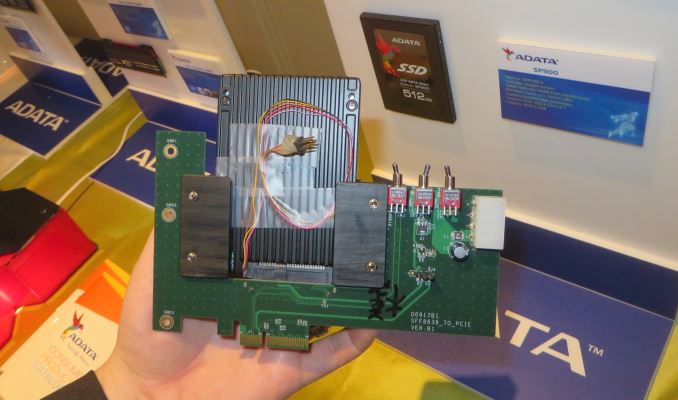
News Editor, Anton Shilov
There are several things that people want from their personal computers these days: mobility, high-resolution display, high performance across a wide range of applications (including demanding PC games), sleek design and some require a small form-factor setup. While it is possible to get an ultra-thin laptop, a powerful desktop and a high resolution monitor, it is pretty hard to get everything in one package. Apparently, companies like ASUS, MSI and Razer know a way how to partly solve the problem, and we saw their solutions at CES.
Modern microprocessors and solid-state drive can offer desktop-class performance on an ultra-thin notebook. However, when it comes to performance in graphics-intensive applications, it is simply impossible to build a leading-edge GPU, which is required to play the latest games in ultra-HD (4K) resolution, into an ultra-slim form-factor system. As modern GPUs can dissipate 300W of heat, it is impossible to cool-down such a chip in a laptop. Moreover, even a 100W GPU will completely ruin battery life and will require a sophisticated cooling solution, which means a thicker design. The only way to enable proper graphics performance on a small form-factor PC is to use an external graphics adapter. While some may argue that external graphics solutions are only useful for a fraction of the market, this is not entirely true. In addition to notebooks, external graphics adapters could be plugged to small form-factor PCs like Intel NUC or all-in-one systems with decent displays, which are expanding in their utility, particularly in enterprise and other global markets.
External graphics adapters are not something new. Back in 2007/2008 AMD introduced its external graphics port (XGP) technology, code-named Lasso. AMD’s XGP allowed to connect a graphics card to a PC using the PCIe 2.0 x8 or x16 interface, which guaranteed sufficient amount of bandwidth for the time. Unfortunately, the XGP relied on a sophisticated proprietary connector that was made by only one company and was rather expensive. As a result, it never took off.
ASUS, Alienware, MSI and some other companies have also introduced external graphics solutions for their mobile PCs over the past decade. However, their GPU boxes were either proprietary, or had performance limitations. For example, ASUS’ first-generation XG Station contained an NVIDIA GeForce 8600 GT GPU and used Express Card interface, providing rather low performance even for 2007. More recently, Alienware and MSI introduced proprietary external graphics solutions compatible only with their laptops. The GPUs relied on external PCIe x4 interface, they were compatible with rather powerful video cards (thanks to the fact that they featured their own PSUs) and hence could really bring serious performance improvements. Unfortunately, both Alienware’s Graphics Amplifier as well as MSI’s Gaming Dock were only compatible with select laptops made by these two companies.
At CES 2016 several companies introduced their new external GPU boxes that can accommodate high-end graphics adapters. At least one of the solutions uses Thunderbolt 3 interface with up to 40 Gb/s transfer rate and are compatible with various PCs. Some continue to be proprietary, but are using more modern connectors such as USB Type-C. However, since they can offer desktop performance, they can help to build gaming systems based on ultra-thin notebooks, AIO or SFF desktops.
ASUS was among the first hardware makers to offer external graphics solutions for laptops in the mid-2000s and at CES 2016 it demonstrated its all-new XG Station 2, which is designed for the company’s upcoming notebooks. The XG Station 2 is compatible with any ASUS video card based on AMD Radeon or NVIDIA GeForce GPU that consumes up to 350W of power, which means that you can install almost any board into this dock. The XG Station 2 uses two USB type-C cables that support up to 32 Gb/s transfer rates (which is equivalent to PCIe 3.0 x4), but relies on a proprietary architecture. The external GPU kit from ASUS seems to be a powerful solution and it even allows using the laptop’s own display to play games using external video cards. However, since it is a proprietary technology, it will not be compatible with non-ASUS systems.
The manufacturer did not reveal a lot of information about its plans concerning the XG Station 2 and compatible laptops. Hence, it is unknown how competitive ASUS’ solutions with external graphics will be. Nonetheless, it is a good thing to know that the world’s largest supplier of gaming laptops intends to offer external GPUs as an option.
MSI already offers Gaming Docks for select laptops. At CES 2016 the company demonstrated its external graphics solution for its all-in-one gaming PCs. The external GPU dock for AIO systems is compatible only with the company’s 27XT 6QE as well as NVIDIA graphics cards, but it uses PCI Express interconnection and can house almost any contemporary GeForce (with exception of dual-GPU cards and some non-reference boards). The solution looks like a commercial one and it will, without any doubts, become a key selling point of MSI’s gaming AIOs this year.
The form-factor of the dock is tailored for all-in-one PCs, hence, it cannot be easily connected to laptops or SFF systems. Moreover, since implementation of the PCI Express and GPU power delivery are clearly proprietary, MSI’s external graphics boxes will only be compatible with its own AIOs. Keeping in mind that MSI needs to sell system to gamers, even proprietary external GPU box makes a great sense for the company as it allows is to offer almost any video card with its AIOs, unlike other PC makers.
Razer, which is mostly known for its peripherals and gaming laptops, decided not to use any proprietary technologies with its new Razer Stealth ultrabook and Razer Core external GPU dock. Everything is based on industry-standard components and hence the Core can be connected to almost any system with Thunderbolt 3.
Unlike ASUS and MSI, which are still finalizing their new external GPU technologies, Razer is already taking pre-orders on the Stealth notebook. The Stealth laptop is just 0.52-inches thick, but it features a 12.5-inch IGZO display with 2560x1440 or even 3840x2160 resolution as well as the Intel Core i7-6500U central processing unit. The system can be equipped with up to 8 GB of LPDDR3-1866 memory, up to 256 GB of PCIe SSD, 802.11ac Wi-Fi, built-in webcam and so on. The laptop starts at $999, which is comparable to other ultrabooks.
They Razer Core is an external GPU box that connects to personal computers using Thunderbolt 3 interface with up to 40 Gb/s transfer rate (appropriate cable is included). The enclosure features its own 500 W PSU and is compatible with all graphics cards with up to 375 W TDP. The GPU box also features four additional USB 3.0 ports as well as a Gigabit Ethernet controller.
Razer does not sell its Core GPU box just yet, hence, the pricing is unknown. Nonetheless, its reliance on Thunderbolt 3 technology and compatibility with a variety of laptops and SFF PCs makes it a very interesting product. If the company decides not to artificially limit compatibility of its Core with third-party PCs, the external GPU box can become a rather powerful product among owners of notebooks and SFF PCs with Thunderbolt 3 interconnection.
The general industrial trends show that modern PCs are becoming smaller and sleeker, but high-end graphics adapters remain rather large and power hungry. As a result, external graphics solutions for mobile and small form-factor personal computers are just what the doctor ordered. However, proprietary solutions are not always good, especially if we are talking about systems from smaller suppliers or the desire to be 'truly' universal. That being said, locking a user into a certain methodology might guarantee future sales. But Thunderbolt 3-based external GPU boxes look very promising because they combine relatively high transfer rates with simplicity and industry-standard cables (which means relatively affordable pricing).
In fact, after seeing Razer’s Core, it becomes pretty clear that after a decade in development, I think external graphics is on its way to finally done right.
http://www.anandtech.com/show/9986/c...-editor-recall
-
02-02-16, 17:30 #339Tech Ubër-Dominus


- Registo
- Nov 2013
- Local
- City 17
- Posts
- 30,121
- Likes (Dados)
- 0
- Likes (Recebidos)
- 2
- Avaliação
- 1 (100%)
- Mentioned
- 0 Post(s)
- Tagged
- 0 Thread(s)
AMD, Intel, Nvidia, Basemark, And Futuremark Talk VR At 'What's Under The Hood' Panel At VR Fest (Video)
Noticia:
As we’ve mentioned in a number of previous posts, Virtual Reality was everywhere at CES. In fact, it was so ubiquitous that there was a separate off-site mini-conference called VR Fest that took place at the Palms Casino Resort at the same time as CES. Part of the VR Fest activities included a series of panel talks presented by the ITA's VR Council.
Back in the fall of 2015, Tom’s Hardware was privileged to moderate the 'What’s Under the Hood' panel at the ITA's Immersed 2015 Conference, and we were asked again to moderate a panel on the same topic at VR Fest.
The moderator duties fell to me, and joining me on this version of the panel were representatives from all three major CPU and GPU vendors, AMD, Intel, and Nvidia. To have all three on the same panel discussing VR was quite a coup for the ITA, and also, both Basemark and Futuremark were present. Both of those companies are leading the way when it comes to measuring and evaluating VR solutions with their VR benchmarking tools.
The Immersive Technology Alliance VR Fest 'What's Under The Hood' PanelGoing left to right, the panelist were Ryan McCall, Director of Sales and Business Development, Futuremark; Frank Soqui, General Manager Enthusiast Desktop Group, Intel; Daryl Sartain, Director of VR, Radeon Technology Group and AMD and VR Council Chair (who we also interviewed separately at CES); Tero Sarkkinen, CEO, Basemark; and Neil Trevett, VP Mobile Ecosystem, Nvidia and President of the Khronos Group (creators of the OpenGL and Vulkan graphics APIs). As you can see, it was quite a distinguished panel to have talking about Virtual Reality for 30 minutes.
We don’t want to spoil the content of the video for you, which is long but well worth a watch if you want to hear some in-depth insight into the state of VR today from these experts. However, just to whet your appetite, some of the topics discussed are the announcement of the Oculus Rift’s price and how it may impact the GPU vendors like AMD and Nvidia, and Intel’s thoughts on VR and whether Skull Canyon could be made into a mini VR-box. We also talked with about the challenge of benchmarking VR and how companies like Basemark and Futuremark have to measure different kinds of VR experiences (360-video vs. full-on VR gaming), and finally, how new APIs like DirectX 12 and Vulkan are going to impact VR.
After speaking to all the panelists, it looks like 2016 is going to be a very exciting year for them, with VR presenting both new opportunities and new challenges. We looking forward to keeping you abreast of any and all future developments in the VR space – 2016, the "Year of VR," is only the beginning.
http://www.tomshardware.com/news/amd...est,30972.html
-
22-02-16, 16:55 #340Tech Ubër-Dominus


- Registo
- Nov 2013
- Local
- City 17
- Posts
- 30,121
- Likes (Dados)
- 0
- Likes (Recebidos)
- 2
- Avaliação
- 1 (100%)
- Mentioned
- 0 Post(s)
- Tagged
- 0 Thread(s)
Hoverboard Company Backs Down After Rivals Raided At CES 2016
Noticia:
Trends come and go, from the latest phone to the newest console people often buy and then upgrade their technology a few months later. A few years ago the world was caught in a segway craze, with users riding around work and towns to doing rallies through woodland on the machines, but these were shortly replaced by their handleless “hoverboard” siblings. Sadly as with all crazes and trends, everyone wants a piece of the action. The hoverboard boom has led to more than a few recalls due to dangerous products, and even injuries. With cheap models being created all over the world, a US company decided to fight to protect their product at CES this year, a fight which the Chinese company has now backed out from.
Earlier this year at CES companies was showing off all kinds of technology, but Future Motion had their eye drawn only to one stall. Changzhou First International Trade Co had a stall set up demonstrating their version of Future Motions “hoverboard”. The design features a single wheel located in the middle of the device, as shown in the image above. Future Motion went to court and against no opposition asked the judge to issue a restraining order on the products sales. The hearing lasted a grand total of 7 minutes and at the end, the temporary restraining order was issued resulting in a raid on the booth at CES.
Future Motion has now dropped the case, which was set to be heard on the 19th February. Changzhou isn’t too happy though and is looking to recover the legal fees it’s had to pay to its lawyers. Their lawyer has released a statement saying that the “sole purpose of FM [Future Motion]’s TRO was to deprive its chief competitor Changzhou of its lawful right to display Changzhou’s Trotter product at the Consumer Electronics show (CES)”.
This definitely looks bad for Future Motion, who seem to have dropped the case in the hopes of it all fading away, with their actions seeming to back Changzhou’s evaluation that it was nothing more than a move to block competition.
http://www.eteknix.com/hoverboard-co...d-at-ces-2016/
-
29-03-16, 08:14 #341Tech Ubër-Dominus


- Registo
- Nov 2013
- Local
- City 17
- Posts
- 30,121
- Likes (Dados)
- 0
- Likes (Recebidos)
- 2
- Avaliação
- 1 (100%)
- Mentioned
- 0 Post(s)
- Tagged
- 0 Thread(s)
How Can A Smartphone Stand Out In A Sea Of Sameness? Specialize
Noticia:When we visited LG’s booth at CES, we saw a pair of nice-looking smartphones, the V7 and V10. They’re perfectly fine handsets with decent specs and a price to match, but there was also nothing much to set them apart from the throngs of other midrange smartphones on the market, either.
This is not to use LG as a punching bag. The company is no different from any other smartphone maker. It has premium offerings (such as its G-series, the latest generation of which is the LG G5) as well as a number of handsets to flesh out the mid- and low-range of the market. This is the current strategy of the larger handset makers -- even Apple.
This strategy has been effective to an extent. High-dollar buyers drop major cash on those incredible flagships, and the rest of us snap up what we can afford on down the line. The handset makers do their best to leverage their IP to add some value to the phones down their respective product stacks.
Smartphones Have Become Commoditized
But good golly, there are so many smartphones on the market that are just there, with really no purpose at all other than to add noise. At this point, given a new phone and a price tag between $300-$500, we could guess the specs with reasonable accuracy.
Plenty of other solidly-performing devices are populating the lower end of the market as well, around the $200 range.
If the vast majority of smartphones have become a commodity, how can a company make its handset stand out from the crowd? Why would anyone buy X over Y?
 $200 Huawei Honor 5xSmartphone buyers certainly divide themselves up according to platform to an extent, and once they’ve bought in, it’s easy to stay put. Once you get used to all of Google’s or Apple’s apps and services synced across your smartphone and PC, you’re probably more likely to stick with Android or iOS, respectively. (Microsoft is trying to foster the same integration and loyalty with Windows for Mobile.)
$200 Huawei Honor 5xSmartphone buyers certainly divide themselves up according to platform to an extent, and once they’ve bought in, it’s easy to stay put. Once you get used to all of Google’s or Apple’s apps and services synced across your smartphone and PC, you’re probably more likely to stick with Android or iOS, respectively. (Microsoft is trying to foster the same integration and loyalty with Windows for Mobile.)
That’s brand loyalty borne out of (slight) laziness, but it’s a form of brand loyalty nonetheless.
However, even just within the Android market, there are thousands of handsets to choose from. Microsoft is pushing hard worldwide on OEMs adopting its mobile OS in developing areas, and Apple--well, Apple will continue to do its “premium” thing.
Specialize, Even The Branding
In such a crowded environment, one way to stand out is by offering a specialized, or dedicated, smartphone aimed at a specific type of user.
For example, ahead of CES, Marshall--yes, the amplifier company, of Marshall stack fame--reached out to see if we were interested in seeing its branded smartphone. Frankly, I almost deleted the email outright. (We get hundreds, perhaps thousands of pitches leading up to CES, and most of them go straight to the Delete folder.) But then we thought, “Why not. Let’s see what they’ve got.” What they had was a smartphone that made sense.
Everyone who owns a Marshall product likely has a smartphone, and they may have some affinity towards the brand. They’re also more likely than regular consumers to want to listen to high quality audio and even record music. This Marshall “London” phone taps into all of that. Basically, Marshall didn’t make a smartphone, it made a branded tool that its customers might want.
 This sort of approach is key, because it acknowledges that smartphones are no longer the little rectangle on which we text people, scroll through social media and snap selfies. Your phone is your right hand. It’s your personal assistant. It’s an indispensable tool for navigating and executing your life and work. And it can be much more.
This sort of approach is key, because it acknowledges that smartphones are no longer the little rectangle on which we text people, scroll through social media and snap selfies. Your phone is your right hand. It’s your personal assistant. It’s an indispensable tool for navigating and executing your life and work. And it can be much more.
A Whiff Of Modularity
The above is mostly the reason why modular smartphones are appealing. They ostensibly allow individuals to customize that right hand. If you’re a musician or audiophile, you may want a dedicated audio play/record module. If you love mobile games, you could drop in an external GPU module to beef up performance. If you’re a shutterbug like me (and don’t want to lug around a big DSLR all the time), a camera module that offers higher quality than any built-in camera would be a must-have. And so on and so forth.
The state of the various modular smartphone projects out there are tenuous at present, so a viable (if temporary) stand-in for this kind of customization is specialized devices. (Hey, is Panansonic still making that camera phone?)
 The High End, Setting The Trend
The High End, Setting The Trend
For a while there, the sameness of smartphones had invaded the high end of the market. From flagship to flagship to flagship, each differed from the others in relatively minor ways. (One must only look to the vociferous cries from consumers about removable batteries and the need for SD card slots to see how disinteresting the conversation about flagship smartphones had become.)
Customizing the software was one way OEMs tried to stand out. However, the result was often ugly UIs and feature bloat. Now the trend is reversing, with Motorola offering an essentially stock Android experience similar to Nexus phones. Other OEMs (such as Samsung) are also wising up and focusing on design, simplicity, and user experience instead of just piling in useless features.
Cameras and the photo/video experience is another area where companies try to separate themselves from the pack, to the point that chipmakers are thinking about it. For example, MediaTek said imaging is a primary use case and something for which it’s optimizing its SoCs.
The only problem with most of the above is that as soon as one OEM adopts something new, everyone else copies it in the next design cycle (think iPhone and fingerprint scanners). And then the sameness cycle repeats.
That’s starting to change. Although all flagships target a certain type of user who always wants the latest and greatest, there seems to be a split among the three main mobile platforms -- Android, iOS and Windows Mobile -- about what specialized markets their highest-end devices are beginning to serve.
 For Android, VR is the big value-add. Although the Gear VR is no Oculus Rift, the devices do share some DNA, and the former is thoroughly engaging. But you have to have a certain, high-end Samsung device to use it. (It is true that there are growing throngs of Google Cardboard-based cheap VR HMDs that work on any number of handsets, but those are sort of VR-lite.)
For Android, VR is the big value-add. Although the Gear VR is no Oculus Rift, the devices do share some DNA, and the former is thoroughly engaging. But you have to have a certain, high-end Samsung device to use it. (It is true that there are growing throngs of Google Cardboard-based cheap VR HMDs that work on any number of handsets, but those are sort of VR-lite.)
LG has now dipped a toe into the smartphone/VR pairing market with the G5 and the LG 360 VR headset (although in our brief time with the HMD, it did not seem to be on par with the Gear VR).
On Windows Mobile, Microsoft has taken a decidedly productivity-based approach. It’s worked hard to build up the Universal App ecosystem to unify application code across its desktop and mobile OSes, and it’s created Continuum to let you use your Windows 10 Mobile phone as a de facto PC. Companies such as HP have dived in with this concept in a big way.
Apple doesn’t seem to be budging much from its long-held mobile strategy. Recent mobile developments include essentially iterative changes to its lineup. At some point Apple is going to need to get innovative again, but for now it seems the company is content to sell premium devices to throngs of people that just want an excellent phone with numerous software and ecosystem features.
(Apple does have an opportunity in VR/AR, though, and in fact we would be shocked if the company didn’t announce something to that effect at some point within the next couple of years. We don’t put much stock in rumors, but the rumor mill has been churning with tidbits here and there pointing to Apple and VR, and we do know that Apple has made multiple acquisitions pertaining to VR/AR, including Metaio and its intriguing AR tech.)
The Evolution Will Be Televised, Or At Least Snapchatted
This trend towards specialization is already happening. You can see it clearly in examples such as the Marshall London smartphone, as well as in the (as-yet failing to launch) modular smartphone model. Meanwhile, even flagship handsets are getting additional purposes and features that will sway many buyers one way or another.
http://www.tomshardware.com/news/sol...ize,31467.html
Informação da Thread
Users Browsing this Thread
Estão neste momento 1 users a ver esta thread. (0 membros e 1 visitantes)





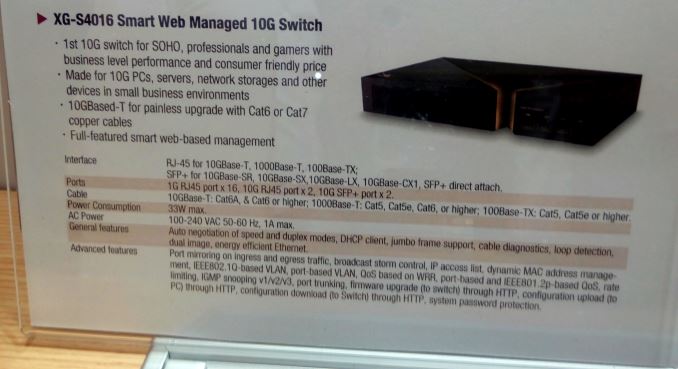
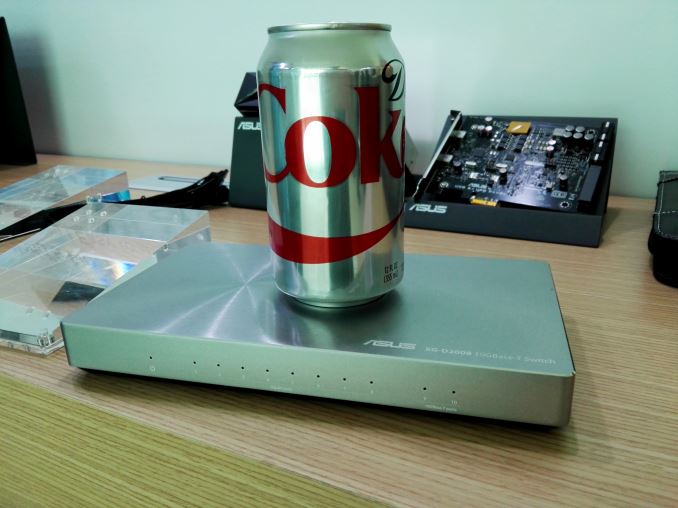

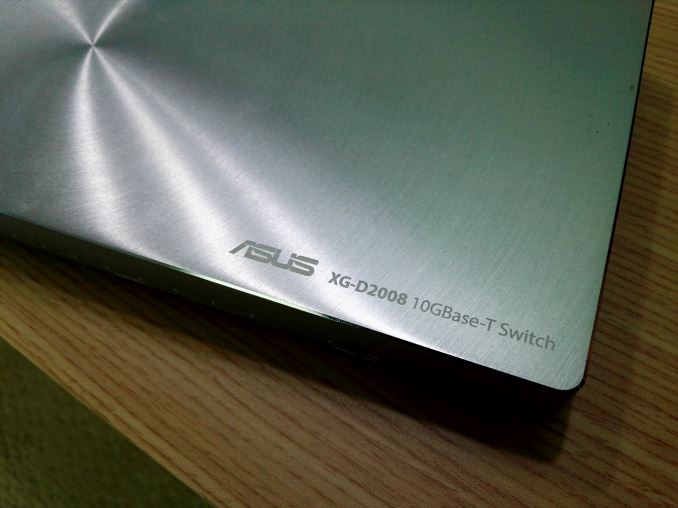
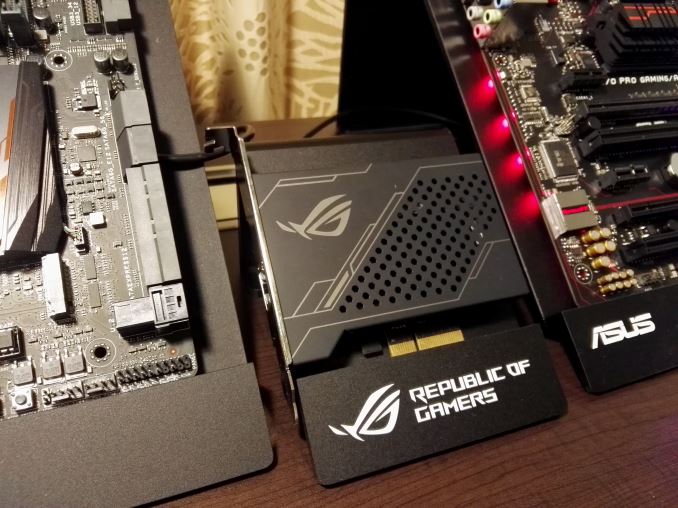
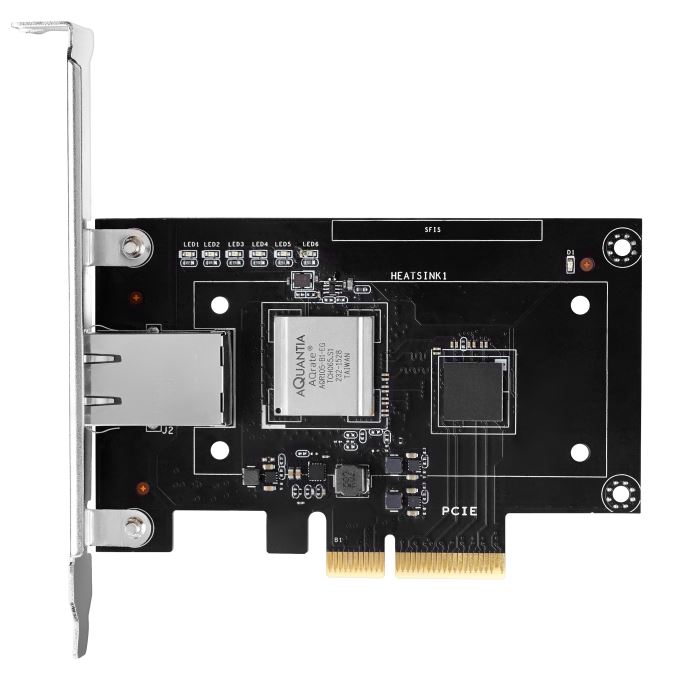


 Responder com Citação
Responder com Citação
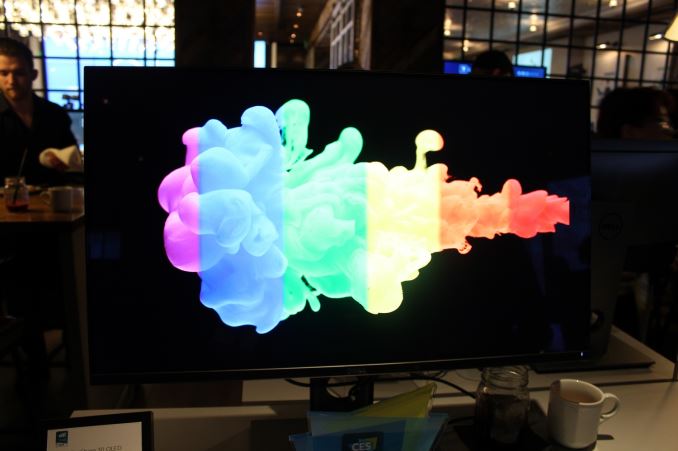


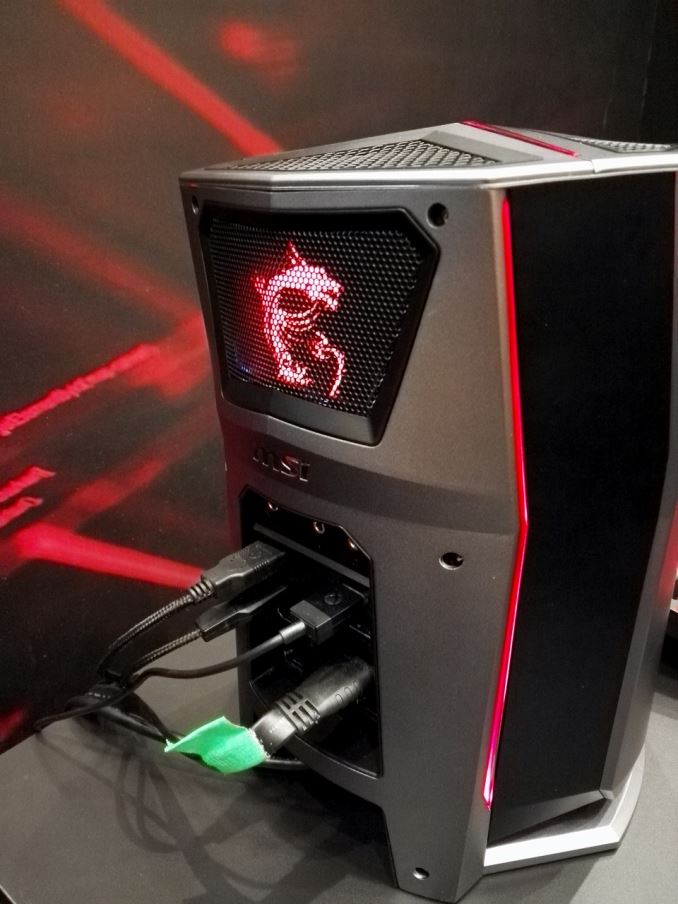

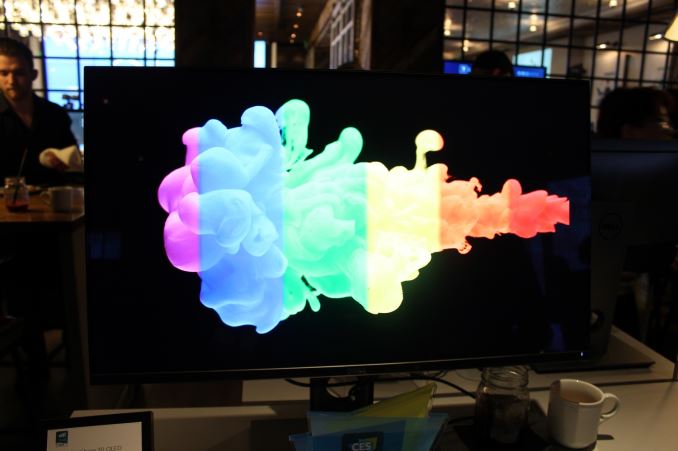

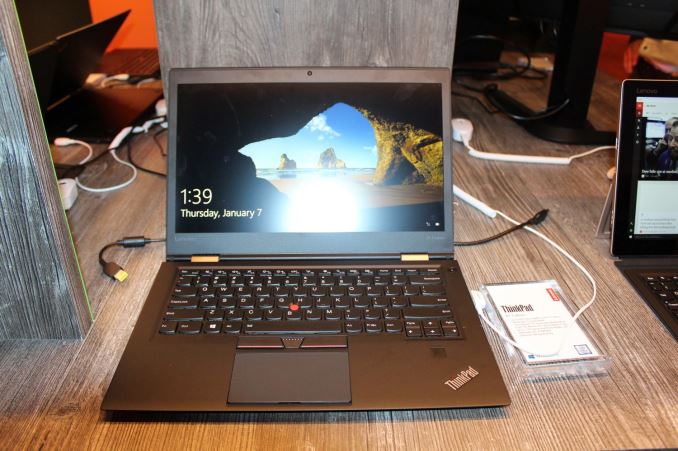


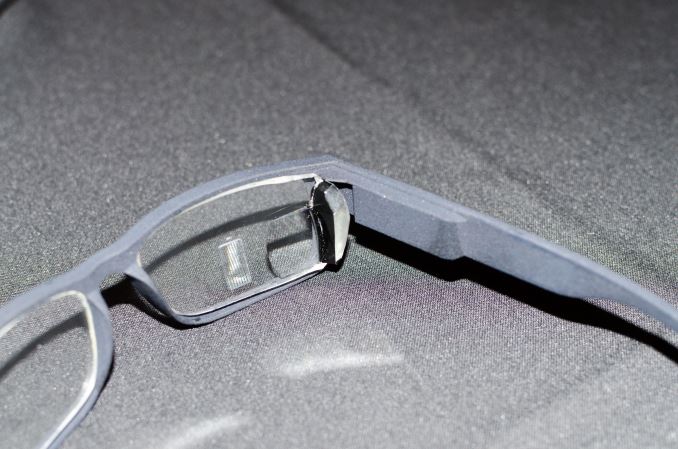
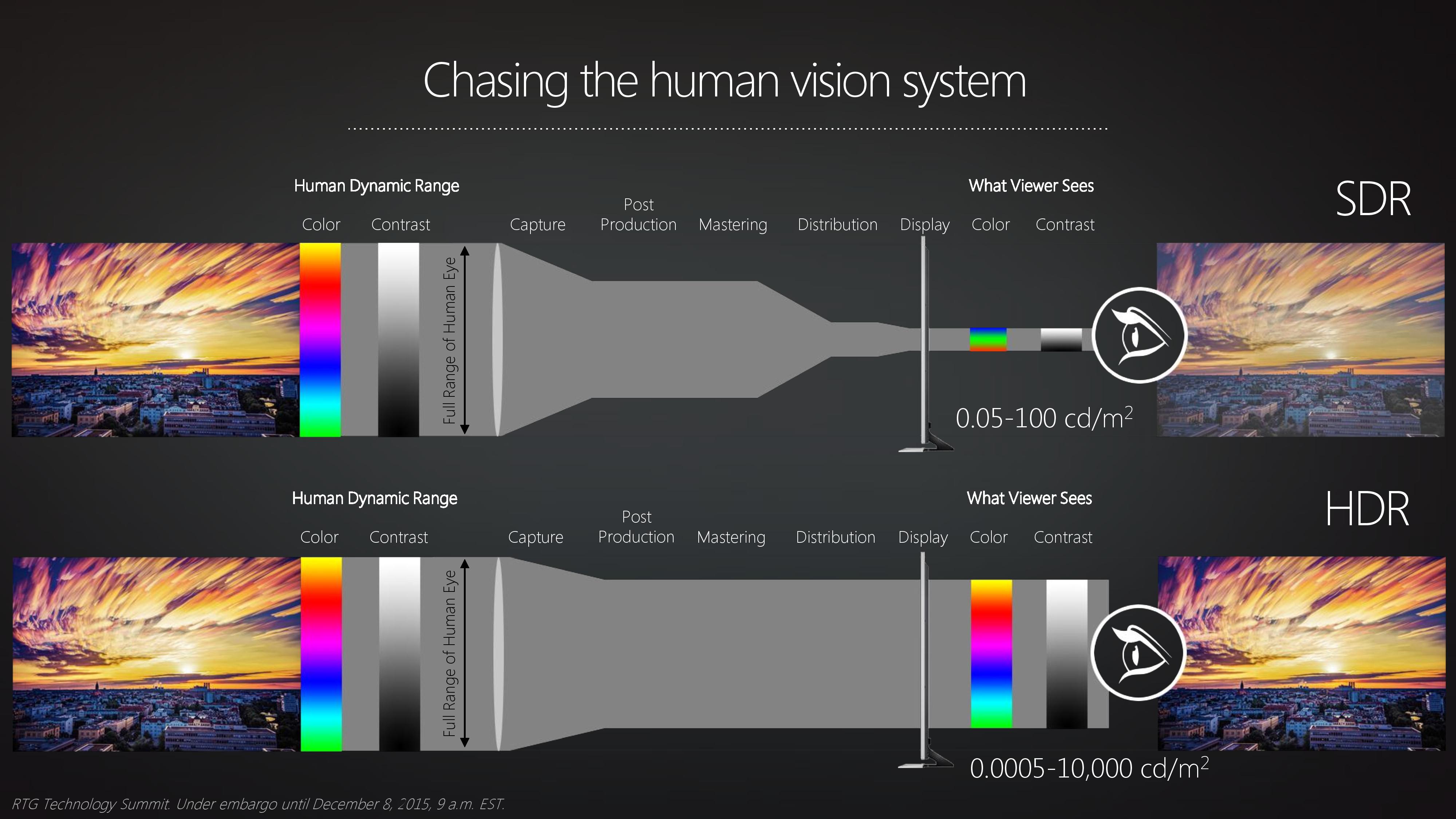
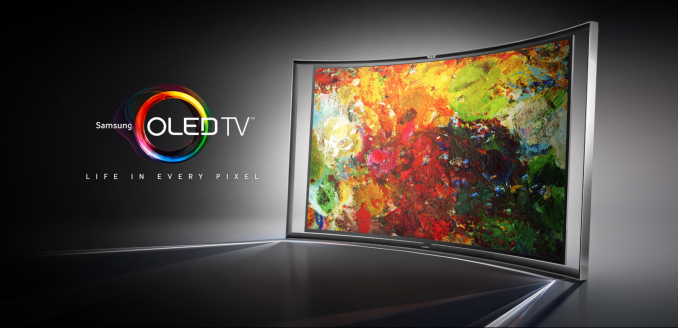
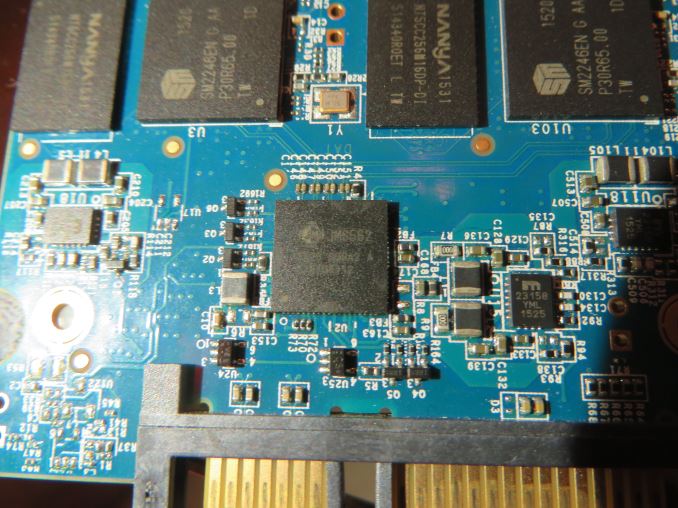
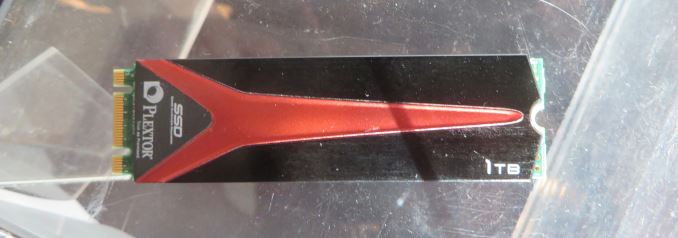
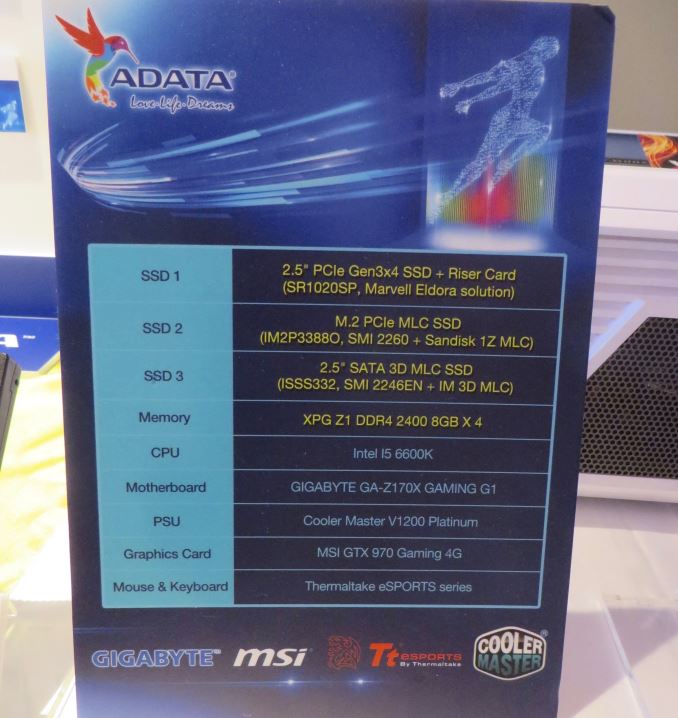

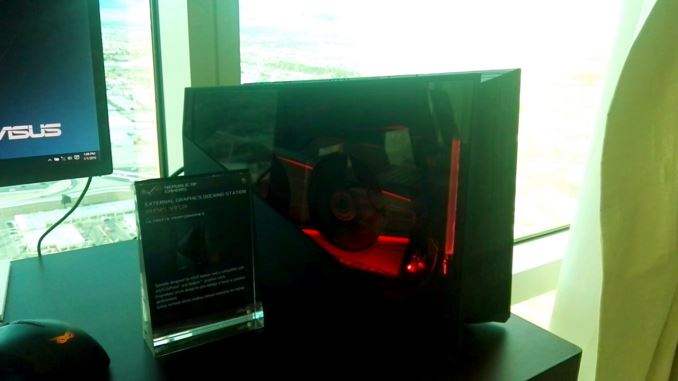
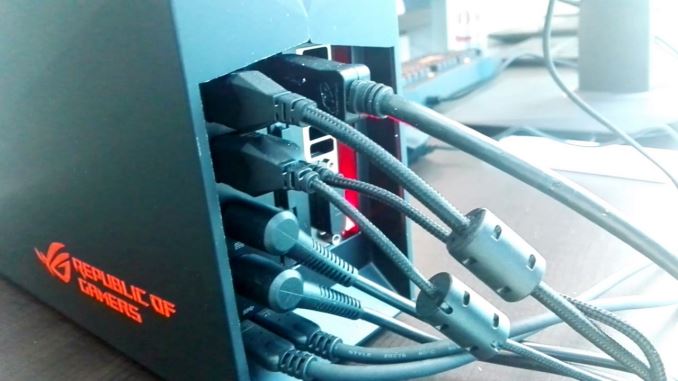
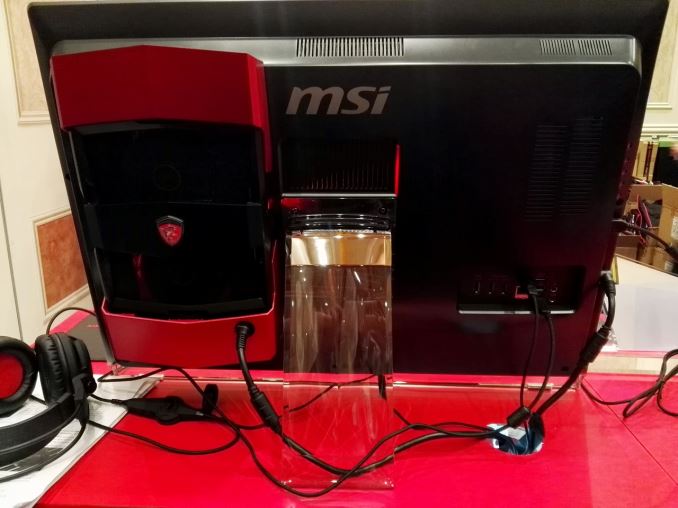

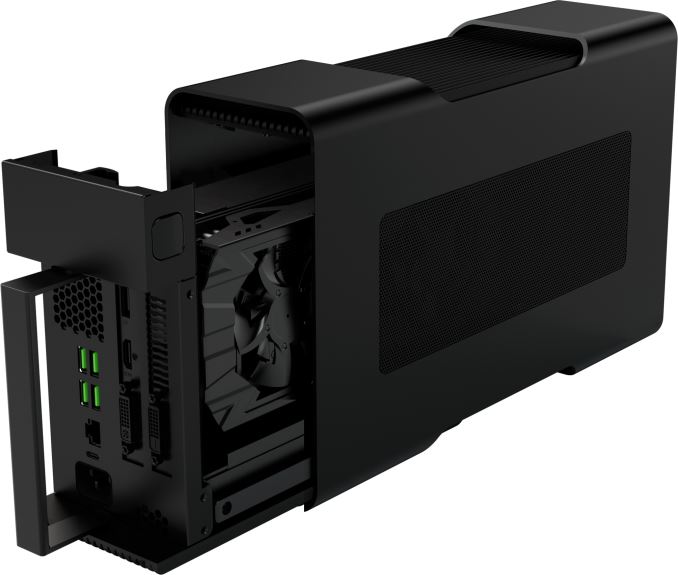
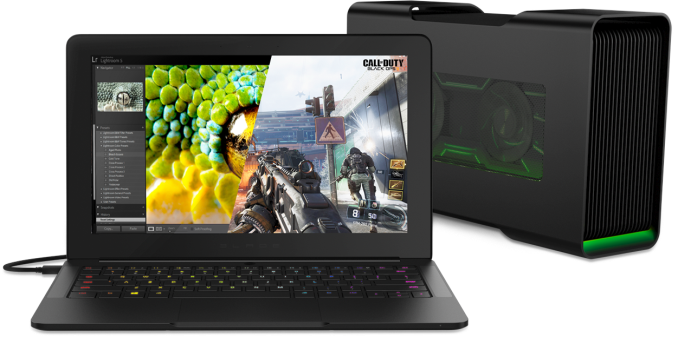

Bookmarks